What Georgia Can Learn from the US Census
By Vahe Sargsyan
Analyst with the Mitq Analysis Center
Photos by Tamar Baboujian
In anticipation of the 2010 Census, a large effort is being made in the U.S. to reach out to the Armenian population and make sure they mark themselves as Armenians. According to U.S. federal law, if there is a large enough number of an ethnic group in a region, than that ethnic group is entitled to a certain level of representation within its locality. The U.S. Census counts all citizens—including illegal aliens—who pay their taxes and, thus, deserve basic rights in local issues. The government is also mandated to accommodate to the linguistic needs of large ethnic groups, through things such as bilingual education and translation.
In the Republic of Georgia, a population count in 2002 estimated that there were 207,598 people living in the region of Javakhk. Of these, 55% were Armenians, while Georgians made up 43% of the population. In addition, the count held in the historically Armenian region of Dsalga estimated that there were 11,484 Armenians, 2,510 Georgians, 4,589 Greeks, 1,992 Azeri’s, and 313 other ethnicities residing there.
With this background on the U.S. process, as well as the numbers from the Georgian census, in mind, let us take a more in-depth look at the situation confronting Armenians living in Javakhk.
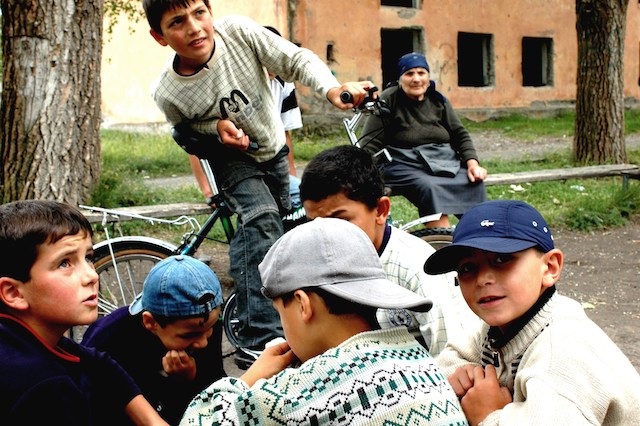 First of all, in the sphere of education, language classes in Armenian schools in Javakhk have to be taught according to the program of the Georgian government and the teachers are directly paid by the state. In theory, the Georgian government is responsible for ensuring that the population’s mother tongue (Armenian) is taught, but this responsibility is neglected and policies are carried out with the exact opposite effect. For example, Georgia’s Ministry of Science and Education has made numerous attempts to convert the teachings in Armenian schools into strictly Georgian instruction.
First of all, in the sphere of education, language classes in Armenian schools in Javakhk have to be taught according to the program of the Georgian government and the teachers are directly paid by the state. In theory, the Georgian government is responsible for ensuring that the population’s mother tongue (Armenian) is taught, but this responsibility is neglected and policies are carried out with the exact opposite effect. For example, Georgia’s Ministry of Science and Education has made numerous attempts to convert the teachings in Armenian schools into strictly Georgian instruction.
This continues today, as the state seeks to change all textbook materials from Armenian to Georgian. At the same time, Armenian school textbooks are being sold at extremely high prices which are often times too expensive for the people of Javakhk to afford. On top of all of this, the quality of the material in these books is very poor.
The Georgian Education Ministry proceeds to deflect criticism of this severe textbook shortage for Armenians in Javakhk as an issue facing Georgian society as a whole. However, when we are talking about the critical maintenance of a native people (Armenians) living in their motherland (Javakhk), these feeble excuses are simply unacceptable.
Georgia has a friendly neighbor, the Republic of Armenia, who has consistently been prepared to provide such Armenian textbooks for schools in Javakhk and the rest of Georgia, and has done so for over the past 1-2 years. Rather than facilitate this assistance, however, the Georgian authorities have forbidden Armenia from continuing to send schoolbooks to Javakhk (presently, Armenia is permitted to only send language textbooks, with literature and other subjects being strictly forbidden from entering Georgia). It is due to such destructive policies that the spate of supposedly “unsolvable” problems facing schools in Javakhk has surfaced.
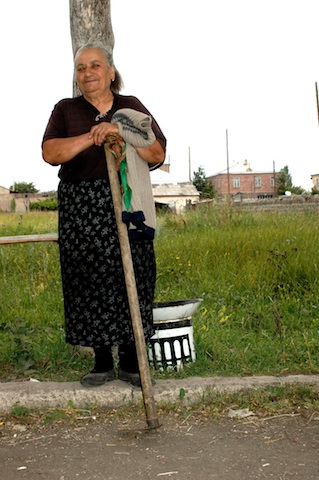 Another urgent problem facing Javakhk is the official requirement that all public writings be in the Georgian language, putting the Armenians in the region in extreme isolation. Through these steps, Georgia is seeking to continue — in contradiction to its responsibilities under international law—its ethnic-based policies of withering away the Armenian demographic in exchange for sprouting up Georgian populated areas.
Another urgent problem facing Javakhk is the official requirement that all public writings be in the Georgian language, putting the Armenians in the region in extreme isolation. Through these steps, Georgia is seeking to continue — in contradiction to its responsibilities under international law—its ethnic-based policies of withering away the Armenian demographic in exchange for sprouting up Georgian populated areas.
However, this policy of attempting to do away with the Armenian population from the region is bound to fail. This is because there is an unwritten rule that the Georgian government has yet to realize: the Armenian people cannot be destroyed on their historical lands and mountainous regions. Even when force and brutal means are used, the Armenian people will never disappear. The Hamshen and ‘hidden’ Armenians still living in Western Armenia today provide the perfect example of this.
On the other hand, the pursuit of such a coercive process can produce an opposite effect, which is the reaction of a people subject to such harsh policies of destruction. Currently, due to Javakhk’s circumstances, this reaction is, in fact, occuring. The steps Georgia is taking are deepening the opposition between the Armenians in Javakhk and the authorities. For Javakhk, it is impossible to repeat what has happened in Gakhet and other regions of Georgia.
In such tense circumstances, different foreign powers with varying interests can manipulate the internal situation, which Georgia never ceases to make noise about. However, neutralizing such powers would be considerably simple if steps were taken by Georgia to decrease the concerns of the Armenians in Javakhk, similar to what is occurring in Iran with their Azeri minority.
The Azeris are connected in countless ways to Iran’s government and are invested in the common life of that society. As such, it is very difficult to use the Azeris against Iran as is desired by the U.S. and its allies. The Azeris, like the Armenians in Javakhk, are not a cultural minority. The Azeris in Iran are natives there, who have participated in the formation of the Iranian state and culture.
However, unlike the Azeris in Iran, Armenians in Javakhk do not have any relation to the lineage of the Georgian people. Nevertheless, they have played a significant role in the formation of the post-Soviet, independent Georgian state. Suffice it to point out just one example: when on March 17, 1991, Georgia boycotted the referendum on whether to maintain the USSR intact, Abkhazia and Southern Ossetia did not support Georgia. The latter two regions voted to protect the USSR and to maintain their assistance from Russia. At the same time, Javakhk’s Armenians supported Georgia’s position, coming forward with a special pronouncement along such lines.
1Unfortunately, the continuation of this “tradition” of reliability on behalf of Javakhk’s Armenians—as happened again during the days of the 2008 Russia-Georgia War—has been completely ignored by Georgia’s governing leaders. Similarly, the Georgian media also chooses to forget this record of loyalty and, instead, everywhere hurls lies and insults against the activists and common people of Javakhk.
Turning back to the obstacles placed before the people of Javakhk, we must draw our attention to the imbalance in Armenian representation in the local civic bodies. When it comes to political representation, the country’s laws of local self-government have subtly and slyly reduced the quantity of Armenians elected or appointed to municipal bodies. For example, in the cities of Dsalga or Asbintsa (Asbnchag) it is impossible to find an appointed Armenian official, even as these two municipalities are made up of approximately 60% and 20% Armenians, respectively. Taking into account that 37% of the Akhaltskha municipality is Armenian and 62% is Georgian, we again see a strict imbalance in executive official distribution. Similarly, in the municipalities of Akhalkalak and Ninodzminta, there is a daily increase in Georgians running executive positions. Added to all of this is the fact that within Samtskhe-Javakhk’s state administration there are virtually no Armenians, even though Armenians make up 55% of the population while Georgians only 43%. This proportional makeup of the population should have resulted in the governor of Samtskhe-Javakhk, as well as 55% of the worker’s in the administration, being Armenian. However, instead, the current governor, L. Jkadua, is Georgian.
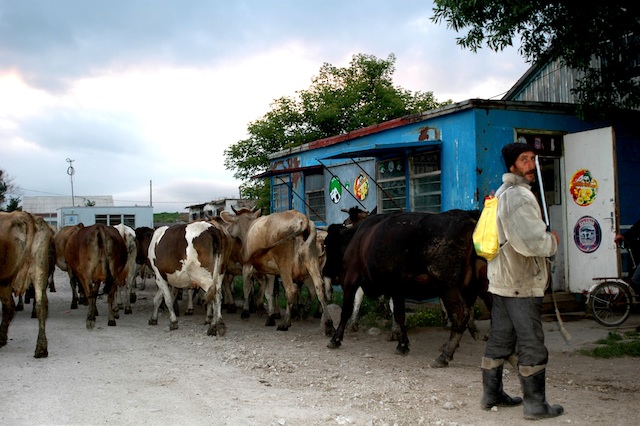 In a recent interview, Jkadua exposes himself to be a naïve youngster whose dream is to see one day see a beautiful Akhaltskha. In Jkadua’s worldview, there is generally no place for Javakhk’s volatile issues. Again, besides the beautification of the city of Akhaltskha, he does not see any problems in Javakhk. The reason for this is simple: he either does not know or is avoiding the deep-rooted causes of Javakhk’s problems.
In a recent interview, Jkadua exposes himself to be a naïve youngster whose dream is to see one day see a beautiful Akhaltskha. In Jkadua’s worldview, there is generally no place for Javakhk’s volatile issues. Again, besides the beautification of the city of Akhaltskha, he does not see any problems in Javakhk. The reason for this is simple: he either does not know or is avoiding the deep-rooted causes of Javakhk’s problems.
This detachment from reality of the governor is reminiscent of Communist-era officials in Armenia at the end of 1920 and the beginning of 1921, when the country’s Education Minister was brought in from Siberia and the person responsible for Agriculture was “invited” from the Chukotka Peninsula. Of course, we all remember that the result of this was the famed and historic February Rebellion of 1921.
Comparing these conditions in Georgia and Javakhk with the more sound policies of then the U.S., mentioned in the beginning of the article, puts this sad state of affairs into even clearer perspective. And this specific comparison was not done out of mere coincidence.
It is clear to all observers that there is a heavy influence of American thinking on the authorities in Georgia. Government leaders constantly praise the U.S. for its way of life and rule of law in their public pronouncements. You could say that, for many of them, the US has become an idol of worship.
At the same time, as a junior ally of the US in the region, many Americans work in the high offices of the Georgian state, helping direct the nation’s course. Sadly however, in the case of the Armenians of Javakhk, the Americans deal with their Georgian counterparts by following the famous saying, “My child, don’t live in the way that I am living, but rather in the way that I’m teaching.”

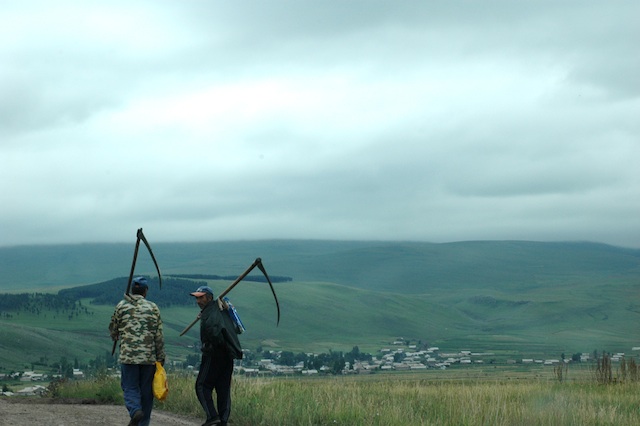
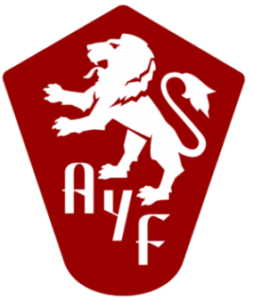
Leave a Reply
Want to join the discussion?Feel free to contribute!